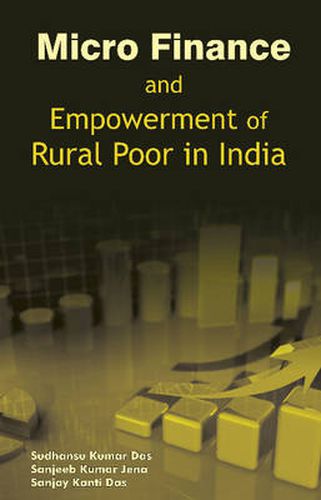Readings Newsletter
Become a Readings Member to make your shopping experience even easier.
Sign in or sign up for free!
You’re not far away from qualifying for FREE standard shipping within Australia
You’ve qualified for FREE standard shipping within Australia
The cart is loading…






In India, the micro finance initiative of National Bank for Agriculture and Rural Development (NABARD) has passed through various phases over the last two decades, viz pilot testing during 1992 to 1995, mainstreaming during 1996 to 1998 and expansion from 1998 onwards. Micro finance has emerged as a visible credit channel to the poor as their access to conventional credit sources is constrained by the requirement of collaterals and high transaction costs. Micro finance is routed through self-help groups (SHGs). Over the years the SHG-bank linkage programme has emerged as the major micro finance programme in the country. The focus of SHG-bank linkage programme is largely on those rural poor who have no sustainable access to the formal banking system. The target groups, therefore, broadly comprise small and marginal farmers, agricultural and non-agricultural labourers, artisans and craftsmen and other poor engaged in small businesses like vending, and hawking. The programme has been providing the rural poor, access to the formal banking system and has achieved several milestones in terms of gender sensitisation, empowerment and poverty alleviation. This volume contains 8 research papers – contributed by experts in the field – which provide deep insights into the role and functioning of micro finance institutions as strategic partners in the empowerment of rural poor.
$9.00 standard shipping within Australia
FREE standard shipping within Australia for orders over $100.00
Express & International shipping calculated at checkout
In India, the micro finance initiative of National Bank for Agriculture and Rural Development (NABARD) has passed through various phases over the last two decades, viz pilot testing during 1992 to 1995, mainstreaming during 1996 to 1998 and expansion from 1998 onwards. Micro finance has emerged as a visible credit channel to the poor as their access to conventional credit sources is constrained by the requirement of collaterals and high transaction costs. Micro finance is routed through self-help groups (SHGs). Over the years the SHG-bank linkage programme has emerged as the major micro finance programme in the country. The focus of SHG-bank linkage programme is largely on those rural poor who have no sustainable access to the formal banking system. The target groups, therefore, broadly comprise small and marginal farmers, agricultural and non-agricultural labourers, artisans and craftsmen and other poor engaged in small businesses like vending, and hawking. The programme has been providing the rural poor, access to the formal banking system and has achieved several milestones in terms of gender sensitisation, empowerment and poverty alleviation. This volume contains 8 research papers – contributed by experts in the field – which provide deep insights into the role and functioning of micro finance institutions as strategic partners in the empowerment of rural poor.